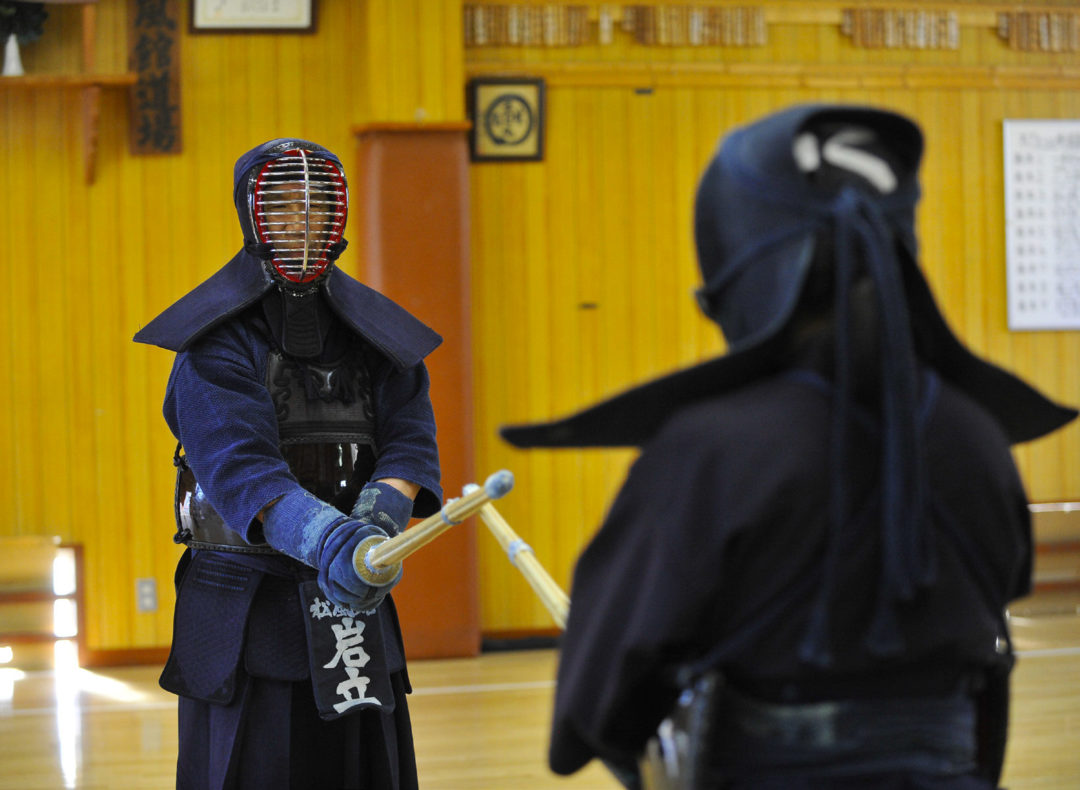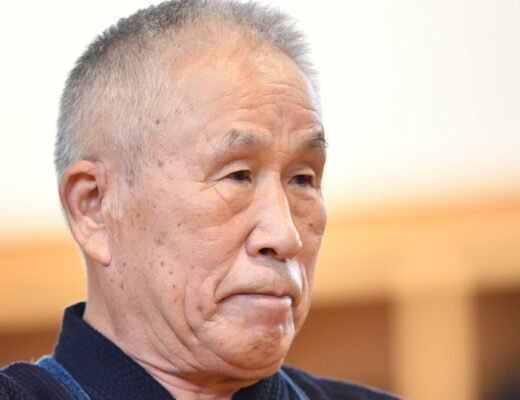You can’t strike when the left heel is on the floor
Take kamae with your left heel raised moderately
Profile
Iwatate Saburo, 8th dan Hanshi
Born in 1939 in Chiba Prefecture. After graduating from Chiba Prefecture Narita High School, he got a job at Chiba Prefecture Police. After retiring from the Tokuren, Iwatate sensei served as a Kanto District Police School Instructor and Chiba Prefectural Police kendo head teacher. Starting in 1978, Iwatate began teaching at the Shofukan dojo and a number of swordsmen from Japan as well as overseas have gathered to ask for the guidance of Iwatate Saburo.
Currently, he is director of Shofukan dojo, Shobi Gakuen University kendo head teacher, the All-Japan Kendo Federation councilor, All Japan Kendo Federation vice-president, and the All Japan Senior-Kenyukai chairman.
If your left foot is sorted out,
your kamae will be better anchored and calm
It is well known that the left hand, hip, and foot are important in kendo. In particular, I always talk about the fact that the left foot is the cornerstone of kendo at kendo seminars and workshops.
You can understand the importance of the left foot because there are many teachings about the left foot, such as “do not put the left heel on the floor unnecessarily”, “keep the left leg slightly stretched”, and “retract the left foot quickly”.
The rest of this article is only available for Kendo Jidai International subscribers!





